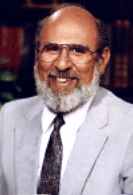A Note From Zola

Dear Friends,
All I can say about the agreement on Hebron is that
it will only be as good as the people on the ground.
It doesn't matter how many government officials shake
hands in front of cameras; what matters is that the
folks involved in a peace treaty actually keep the
peace. My instincts are that we haven't heard the
last of confrontation in Hebron.
It hasn't been brought out in the press, but Hebron
is different from the other West Bank cities in that
it contains a Jewish community. There are no Jews in
Bethlehem, Ramallah, Jericho, etc., but there are 450
determined Jewish citizens who live in Hebron, and they
are staying. They are called settlers by the world
press, but their view is that one does not "settle"
in one's own city. Hebron, after all, is the world's
first Jewish city, and Abraham, Isaac and Jacob are buried
there, according to both Jewish and Arab tradition. It
is not within the authority of any 20th-century government,
whether Israeli or Arab, to contradict history or
Scripture. King David ruled Israel from Hebron as
his capital for seven years, and Jews have always
lived there.
The test this time will be whether the more than
120,000 Arabs who live in that sizeable city
(called a "village" by CNN) can restrain
themselves and live in peace with their handful of
Jewish neighbors. The Israeli army will have quite
a few troops around the Jewish enclave with
reinforcements close at hand. But peace depends on
goodwill, not machine guns. It should be mentioned
that Hamas, considered by the media to be the real
troublemakers on the Arab side, also has a detachment
in Hebron.
In some ways, the whole situation is a kind of rehearsal
for Jerusalem, where the Jewish citizens outnumber the
Arabs nearly four to one. Jerusalem has lived in
peace for decades (other than for occasional acts of
terrorism, but we can say that about New York and
Oklahoma City as well). In my view, it has not been
due so much to the presence of soldiers as to the
general goodwill of citizens who have
gotten used to living together despite religious
and cultural differences.
The Prime Minister has taken quite a beating over
signing the Hebron agreement, but previously he was
taking quite a beating for not signing it. Jerrold
Kessel of CNN asked on January 16 if this agreement
would give us a new Netanyahu, but I would rather have
a new Jerrold Kessel. Netanyahu has not changed. He
is still extremely wary of the Arabs and their terrorist
leader. But he was stuck with this unfortunate "
peace process" that he inherited from the previous
administration. If this ongoing situation were a highway,
it would have "Warning: Hazardous Conditions Ahead"
signs everywhere.
We'll be doing our part covering Israel for you. Our newest
series, The Stones Cry Out, will begin immediately
for most of you. It consists of twelve programs based on
biblical archaeological finds that are taking place throughout
Israel and Jordan. From Dan in northern Israel to the "
rose-red" city of Petra in Jordan, key archaeologists
discuss remarkable artifacts that illuminate God's Holy Word.
Among the subjects addressed are the controversial Hasmonean
tunnel along the Western Wall, Paul's possible prison site
in Caesarea, and the only existing evidence of first-century
crucifixions. Sites include Mount Gerizim, Tel Dan,
Hatzor, Megiddo, Zippori, Qumran, Pella, Beit Shean and
Petra. The Stones Cry Out presents very convincing
evidence that demands thoughtful consideration
by believers and unbelievers alike.
Many of these same historical places can be seen on our
tours of Israel. As you can see by the letters printed in
this newsletter, a pilgrimage to the Land of our Lord is an
incomparable experience for a believer. The Bible comes alive
as you ascend the mountains to Jerusalem, travel through the
green fields of the Galilee, climb the summit of Megiddo to
view the Valley of Armageddon, and cross the silver waters
of the Sea of Galilee as Jesus and His disciples did so many
times.
Join us on our next tour of the Holy Land,
Please call our answering service at 1-800-WONDERS (966-3377),
or Cynthia at 214-696-9760 for a free brochure.
Your messenger,


 Return to Index
Return to Index
 Return to Levitt Letter Archive Index
Return to Levitt Letter Archive Index
 Return to Home Page
Return to Home Page

